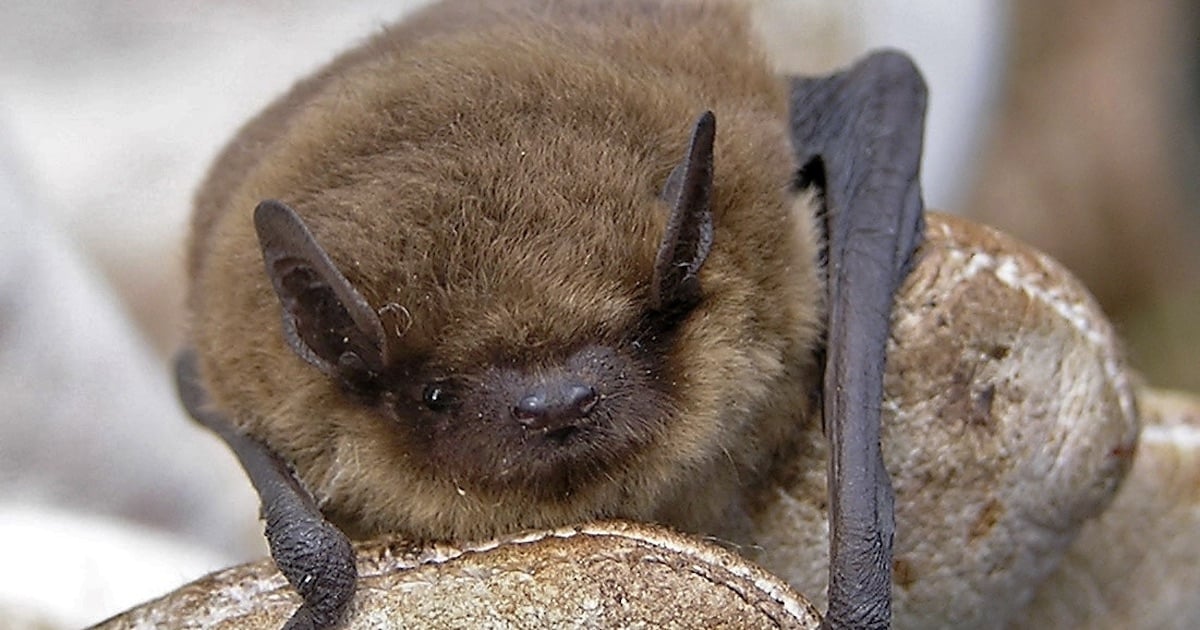 Evolution
Evolution
 Intelligent Design
Intelligent Design
In Bats and Other Animals, Evidence of Common Design in a Magnetic Compass

A recent article in Biology Letters, published by the Royal Society, provides some of the first evidence that mammals can navigate using a magnetic compass. The finding is significant because there has been little data previously to confirm that mammals navigate long distances using the earth’s geomagnetic field. Some bats migrate hundreds of miles. Being nocturnal, migratory bats must navigate without reliance on visual cues, which is why it has been a mystery how that is accomplished.
The Soprano Pipistrelle
One bat species, the soprano pipistrelle (Pipistrellus pygmaeus), migrates between northeast and southwest Europe. In this study researchers determined that the species calibrates their magnetic compass with the position of the sun at sunset.1 A compass based on the earth’s magnetic field is susceptible to various errors, including global drift over time and local anomalies. Therefore, a calibration mechanism improves its accuracy for traveling long distances.
The bats do not just detect the direction of the magnetic field, but also the vertical inclination. Detecting the sun’s position is also not a simple mechanism. Research has found that bats can determine its location through the polarization pattern of sunlight.2 That enables the animal to determine the sun’s position even on cloudy days. This mechanism also involves a complex algorithm because the polarization pattern vectors change as the sun moves through the sky during the day.
Similarity to Migratory Songbirds
The magnetic compass calibration demonstrated in bats is very similar to the behavior observed in some migratory songbirds, who have long been known to navigate using a magnetic compass. This was the case in an experiment with Savannah sparrows.3 The birds calibrate their magnetic compass by detecting the sun’s position using polarized light. What is different about the mechanism in the sparrows is that they calibrate their compass based on information decoded at both sunrise and sunset. This more complex method enables a more accurate calibration as the two measurements are averaged. A more accurate navigation path reduces the distance travelled, saving both time and energy for the animals.
Complex Programmed Behaviors
This navigation behavior falls into the category of complex programmed behaviors as described in my book Animal Algorithms.4 Such behaviors, as in this case, involve both physical organs and behavior algorithms. Birds and bats are not conscious of these behaviors. Instead, they are programmed and involve neural networks and memory. There are physical organs that include mechanisms for detecting and encoding the magnetic field, and detection of the solar polarization pattern. An algorithm must perform the translation of the polarization pattern to the sun’s position, and an algorithm must compare the sensor data and calculate the required calibration. Finally, another algorithm must compute the corrected flight path based on the calibrated magnetic compass.
The typical Darwinian explanation for common traits in species lacking a common ancestor is “convergent evolution.” Usually the specific mechanism invoked is developmental constraint. Paleontologist George McGhee explains, “The same forms have been produced by the repeated channeling of evolution along the same developmental trajectory…Natural selection has a limited repertoire of potential forms from which to choose, and convergent evolution is the result.”5
The Best Explanation
That explanation is inadequate for a number of reasons. The most obvious is that these behaviors do not involve forms that have developmental constraints. But the most significant problem in this instance is that these behaviors involve a number of complex physical and neural mechanisms and large numbers of genes. There is nothing deterministic that constrains all of these elements. A recent article here by Emily Reeves, “Convergent Evolution: An Argument that Comes at a Price,” explains other difficulties with the convergence explanation. The better explanation is common intelligent design. An intelligent agent, it seems, has chosen to design and optimize these complex mechanisms and applied them in unrelated animal species for purposes specific to those animals.
Notes
- Schneider, et al., “Migratory bats are sensitive to magnetic inclination changes during the compass calibration period,” Biology Letters, 2023, 19: 20230181.
- Lindecke, et al., “Experienced Migratory Bats Integrate the Sun’s Position at Dusk for Navigation at Night,” Current Biology, 29, 1369-1373, April 22, 2019.
- Rachel Muheim, John B. Phillips, Susanne Akesson, “Polarized Light Cues Underlie Compass Calibration in Migratory Songbirds,” Science, Vol. 313, 11 August 2006, 837-839.
- Eric Cassell, Animal Algorithms (Discovery Institute Press, Seattle, 2021).
- George McGhee, Convergent Evolution: Limited Forms Most Beautiful (Cambridge, MA: MIT Press, 2011), 7.
